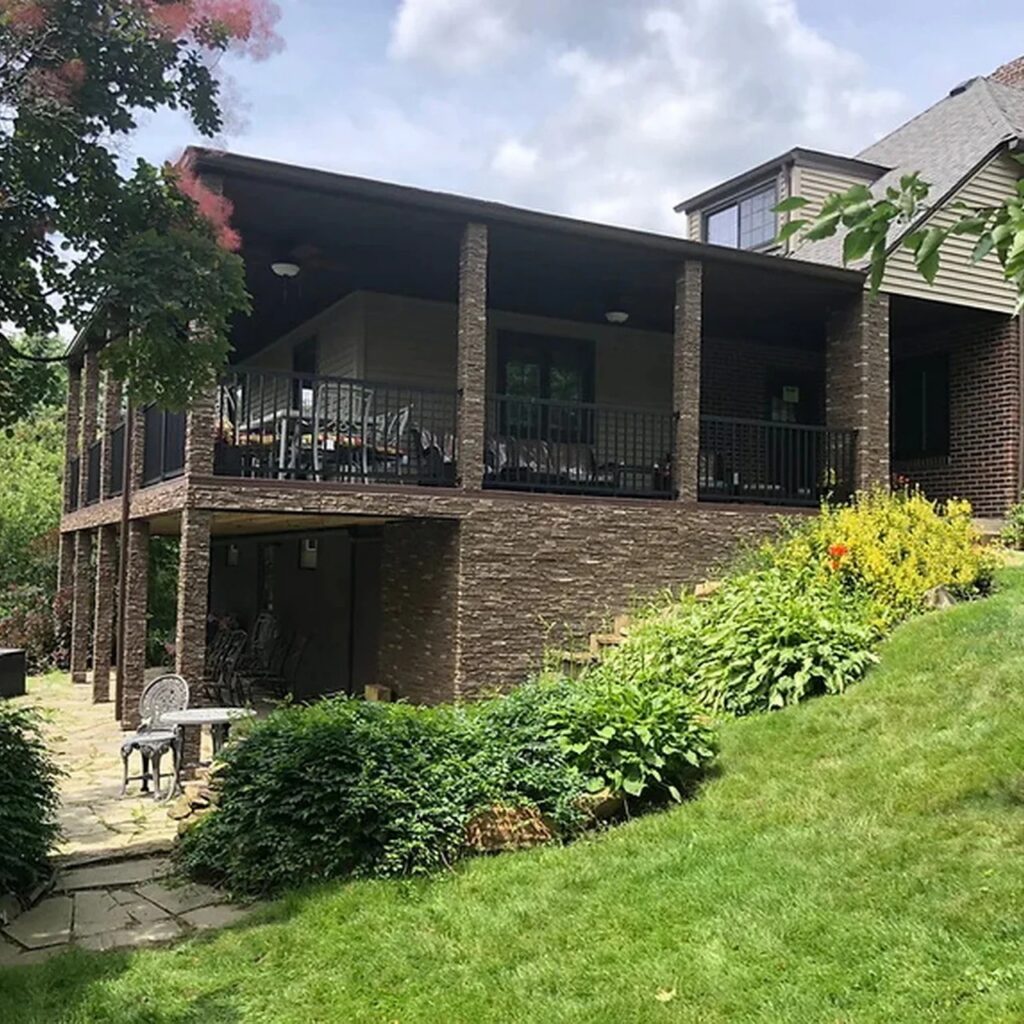The Stone Look Without the Stone Headache Using Faux Rock Siding

There’s something about the look of stone that instantly elevates a home. It’s rugged. Timeless. Clean but textured. Whether it’s lining the front of a house or wrapping around porch columns, stone has a way of making a property look a little more custom, a little more finished.
But let’s be honest—traditional stone isn’t for everyone. It’s expensive, heavy, and installing it can turn into a full-blown construction project. That’s why faux rock siding has become such a popular alternative. It offers the same bold visual appeal, minus the weight, mess, and high costs that usually come with real stonework.
And the best part? You probably wouldn’t know the difference unless someone told you.
What Is Faux Rock Siding, Exactly?
At its core, faux rock siding is a panel-based system made to replicate the look and feel of real stone. It’s usually crafted from polyurethane or a composite material, but don’t let that fool you—when done well, it mimics natural stone with surprising accuracy.
The panels are molded from actual stones to capture the texture, lines, and natural imperfections. Then they’re finished in colors and tones that match real stone types, from warm sandstone to dark slate. Once installed, the seams are hidden, and the overall effect is a surface that looks like it was built by a skilled mason… when really, it might’ve gone up in a weekend.
Why Homeowners Are Making the Switch
The draw is pretty simple: faux rock siding offers the stone look without the stone problems.
For one, it’s much lighter. That means you can use it in places where real stone would be too heavy or complicated to install—like older homes, sheds, fences, or upper-level accents.
It’s also easier (and cheaper) to install. Most panels can be attached using construction adhesive and screws—no mortar, no cutting individual stones, no need for a stone expert on-site. You save on labor, you save on time, and in a lot of cases, you can even install it yourself.
Then there’s the price tag. Real stone and stone veneer tend to be pricey, not just in terms of material, but the prep work and labor involved. Faux rock siding cuts that down significantly while still giving you the overall look you’re after.
Where It Works
One of the best things about faux rock siding is how flexible it is. You’re not locked into using it in just one area. It plays well in a lot of spaces, both outside and in.
Here are a few of the most popular spots:
- Home exteriors: Full facades, lower half accenting, gables, and porch areas
- Outdoor kitchens: Adds texture and blends nicely with the natural surroundings
- Garage walls and sheds: Instant curb appeal with minimal effort
- Interior feature walls: Great for entryways, fireplaces, and stairwells
- Retail and commercial spaces: Easy to install, easy to maintain, and visually striking
You’re really only limited by imagination—and surface area.
Weather-Ready, Year-Round
For those living in four-season climates, durability is a big deal. Real stone can crack or shift with freeze-thaw cycles, and some stone veneer products struggle to keep their color under constant sun.
Most high-quality faux rock siding options are built to handle the elements. They’re water-resistant, UV-stable, and won’t peel or flake over time. Because they’re not porous like natural stone, you don’t get the same issues with moisture or mold. That means less maintenance and fewer long-term headaches.
If you’re the type who doesn’t want to spend every spring re-caulking joints or cleaning mildew off siding, faux rock starts to look even better.
Installation Without the Overwhelm
A big draw for many homeowners is how straightforward the installation process is. Faux rock siding is designed to be friendly for DIYers and efficient for pros.
Panels usually come in manageable sizes, often designed to interlock or overlap to hide seams. You can cut them with standard tools, and they attach directly to most wall surfaces using screws or adhesive. No lath. No mortar beds. No dust clouds from stone-cutting saws.
If you’ve got a weekend, a plan, and a bit of patience, there’s a good chance you could install it yourself. Or at the very least, reduce the time (and cost) a contractor would need to complete the job.
Style Options for Every Type of Home
Stone doesn’t just belong on rustic cabins or country homes. With the range of styles now available in faux rock siding, you can find something that fits just about any architectural look.
Want a contemporary edge? Go with a clean, slate-toned ledgestone. More into warm, cottage vibes? Try a mixed-fieldstone in soft earth tones. There are even options that mimic brick or old-school mortarless stack stone, which can give older homes a subtle refresh without looking out of place.
And the color doesn’t just sit on top—it’s baked into the material, so fading isn’t an issue. You get to keep that freshly-installed look for years, without having to constantly touch things up.
Low-Maintenance Appeal
Here’s the truth: nobody wants more chores. Faux rock siding wins here too. It doesn’t need to be sealed. You won’t have to scrub stains or worry about efflorescence (that white powdery stuff that shows up on real stone). At most, you might rinse it with a hose if it gets dusty or dirty.
That makes it ideal not only for busy homeowners, but also for rental properties, cottages, or commercial spaces where you want style without a high-maintenance routine.
Wrapping It Up
Faux rock siding has come a long way. It’s no longer just a budget alternative—it’s a smart choice in its own right. You get the beauty and character of stone without the weight, cost, or installation hassle. It opens up design possibilities that might not have been feasible with traditional stone and works just about anywhere you want texture, durability, and a bit of wow-factor.
Whether you’re upgrading your home’s exterior, redoing a fireplace, or just want to add a little more visual interest to a blank wall, faux rock might just be the easiest (and smartest) way to get there.
